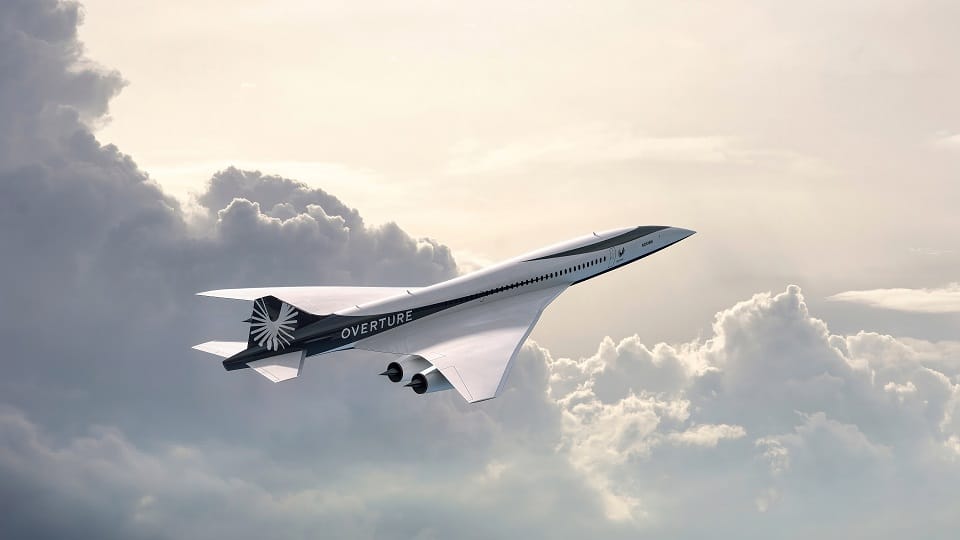Aviation
Rolls-Royce pulls out of Boom’s supersonic jet program
Rolls-Royce is ending its involvement with Boom’s supersonic plane project, according to a report.

Two years after entering into a collaboration agreement, Rolls-Royce is ending its involvement with Boom’s supersonic plane project, according to a report.
The company claims that to address the financial issues that the infamously loss-making supersonic transport (SST) could never resolve, it will make use of the 50 years of advancements in aerodynamics, materials, and propulsion since the creation of the Concorde.
Boom asserts that eventually, the Overture transport’s operation will be carbon neutral due to the use of 100% sustainable aviation fuel (SAF). Actually, Overture has received order commitments from four specific airlines, including what it describes as definitive orders for 15 from United Airlines and 20 from American Airlines most recently.
We’ve completed our contract with Boom and delivered various engineering studies for their Overture supersonic program,” Rolls-Royce said in a statement. “Rolls-Royce has decided that the commercial aviation supersonic market is not currently a priority for us and, as a result, will not continue further development on the program at this time,” says the statement.
Qantas and Airbus Partnership for the biofuel industry.(Opens in a new browser tab)
Boom’s development schedule shows the rollout of the first prototype in 2025, giving it about three years to line up its suppliers, establish a facility to build the airplane, and assemble the planned four-engine, composite-bodied, 65- to 80-passenger Overture. In January Boom said it chose Piedmont Triad International Airport in Greensboro, North Carolina, as the site for its manufacturing plant, groundbreaking on which it expects by the end of this year.
During July’s Farnborough Airshow, Boom revealed the final production design, including a new propulsion system based on four engines rather than two and a revised fuselage shape that features a larger diameter toward the front of the aircraft and a smaller diameter toward the rear.
While Boom estimates the Overture could serve as many as 600 markets around the world, Ferguson sees that most, apart from perhaps transatlantic routes between North American cities and Heathrow Airport, as difficult to justify economically.
In a recent interview with AIN, Boom founder and CEO Blake Scholl acknowledged that coastal cities will benefit most from the Overture’s supersonic speed, but because the airplane would fly 20 percent faster than a conventional jet over land at Mach .94, the airplane will serve far more cities than most imagine when considering the purely transatlantic service the Concorde provided.
the company has developed proprietary route optimization software that calculates the most favorable mix of time spent over water versus over land for greater time savings.

Aviation
COMAC Unveils Plans for the C929 to Rival Airbus and Boeing

After the success of China’s first C919 aircraft, the country is setting its sights on developing a larger plane. COMAC (Commercial Aircraft Corporation of China) has officially confirmed plans to build a widebody aircraft, marking a significant step in its aircraft lineup.
Traditionally, Airbus and Boeing dominate the widebody aircraft market, with decades of expertise in developing planes and engines capable of carrying heavy payloads. China, which currently relies on imported engines, is now aiming to challenge these giants with its own widebody jet, the C929, designed to compete with the Airbus A350 and Boeing 777.
American Airlines Is Looking for Flight Attendants: Apply Now
The C929 will be China’s first independently developed long-range widebody aircraft. It adheres to international airworthiness standards and boasts independent intellectual property rights. The baseline version is designed to seat 280 passengers and offers a range of 12,000 kilometers, catering to global demand for both regional and international air travel.
Russia, which also needs reliable narrowbody and widebody aircraft, could become a key customer for the C929. Additionally, China plans to target the broader Asian market as it continues to expand its aviation capabilities.
Close Call at Heathrow: BA Flight Narrowly Escapes Drone Collision
China’s aviation progress includes the ARJ21 (now called C909), a regional jet with 100 seats for shorter routes, and the C919, a narrowbody jet with 180 seats designed to rival the Boeing 737 MAX and Airbus A320. Both models have found increasing demand in the domestic market.
At China’s largest air show in Zhuhai, COMAC announced that Air China will be the launch customer for the C929 widebody jet, though details about order size and delivery timelines were not disclosed.
Other major deals announced by COMAC include:
- Hainan Airlines: Firm orders for 60 C919 and 40 C909 regional jets.
- Colorful Guizhou Airlines: 30 C909 jets, with 20 firm orders and 10 provisional agreements.
The C929, renamed from the CR929 after Russia withdrew from the joint development project in 2023, is expected to carry 280–400 passengers with a range of 12,000 kilometers, competing directly with Boeing’s 787 Dreamliner.
According to COMAC’s deputy general manager, Tong Yu, the first fuselage section of the C929 is expected by September 2027, with prototype test flights anticipated soon after.
-

 Aviation2 months ago
Aviation2 months agoMicrosoft Flight Simulator Raises $3 Million to Bring Back the An-225 Mriya
-

 Airlines2 months ago
Airlines2 months agoQantas Engineers Stage Walkout Over Cost of Living Concerns
-

 Airlines2 months ago
Airlines2 months agoQatar Citizens Can Travel to the United States Without a Visa
-

 Aviation2 months ago
Aviation2 months agoQatar Airways bans these new Electronic Devices on plane
-

 Airlines2 months ago
Airlines2 months agoJapan Airlines Rolls Out Free Domestic Flights to International Passengers
-

 Defence2 months ago
Defence2 months agoWhich Country Has the Largest Fleet of Fighter Aircraft?
-

 Airport2 months ago
Airport2 months agoWestern Sydney Airport Welcomes Its First Plane After 6 Years of construction
-

 Travel2 months ago
Travel2 months agoQatar Airways Launches Four Additional Flights from Amsterdam








